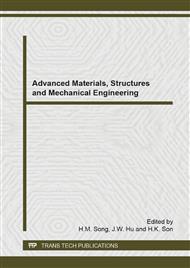p.330
p.336
p.345
p.349
p.355
p.361
p.366
p.372
p.379
Prognosis the Erosion-Corrosion Rates for Slurry Seawater Flow in Steel Pipeline Using Neural System
Abstract:
The work of this paper proposes a new technique for estimating and predicting erosion corrosion rate for laminar and turbulent flow in pipes. The technique depends on the neural networks Artificial Intelligent algorithms. Based on experimental results, which was applied to A 106 carbon-steel pipes, the networks are trained. Four velocities (Reynolds numbers) are used for laminar and four for turbulent regimes. The experiments also used seawater containment three different concentrations of sand. For each experiment the iron losses were measured six times in three hours’ time interval. The proposed estimating/predicting system managed to find values between the readings as well as predict the behavior of the erosion corrosion rate for extra three hours. The estimated/predicted results have been developed to find the transient zone between the Laminar and Turbulent flow regimes and investigating its effects on the erosion-corrosion behavior.
Info:
Periodical:
Pages:
355-360
Citation:
Online since:
September 2014
Authors:
Keywords:
Price:
Сopyright:
© 2014 Trans Tech Publications Ltd. All Rights Reserved
Share:
Citation:


